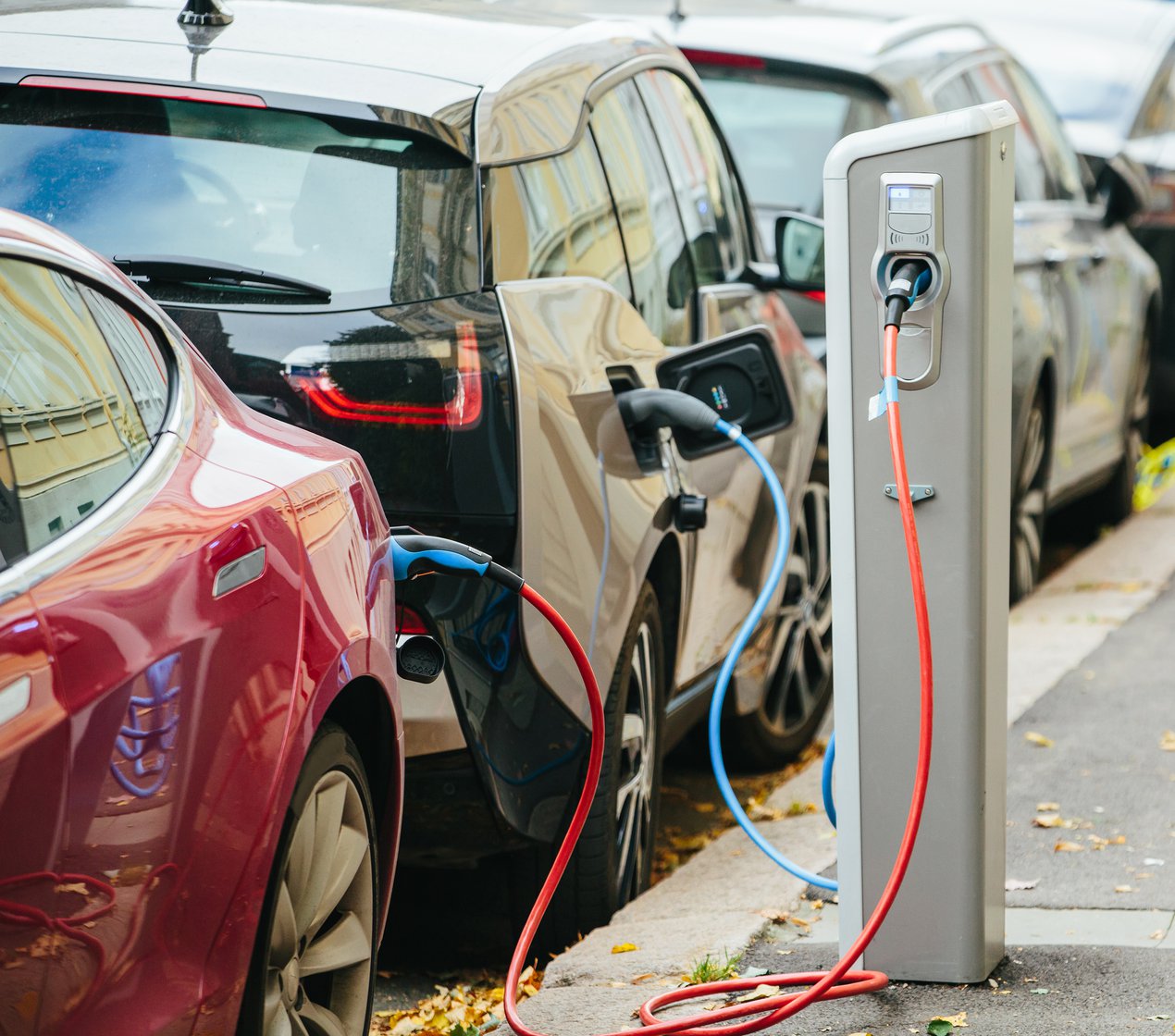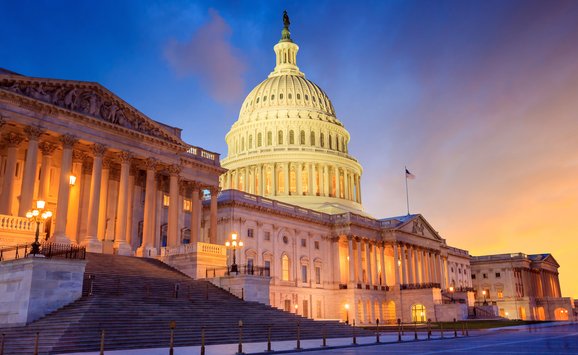In 2016, transportation surpassed electricity as the highest greenhouse gas-emitting sector in the United States. In response, many policymakers have sought to tackle emissions from transportation, and the most commonly proposed method of doing so is through electrification of vehicles. Since light-duty passenger vehicles that run on gasoline make up about 60 percent of emissions from transport, converting this fleet from gasoline to electric cars could substantially reduce emissions from transportation.
Electrification is expected to reduce transportation emissions for two main reasons. First, electric vehicles (EVs) are far more fuel efficient than gasoline vehicles, and therefore require less fuel to run. Most electric cars have an efficiency rating of over 100 miles per gallon equivalent, which far exceeds the miles per gallon (MPG) ratings of the most efficient gasoline vehicles today. Second, EVs are charged using electricity from the power grid which, on average, is generated using a combination of fuels, including natural gas that has overtaken coal as the major fossil fuel, and non-emitting sources like nuclear and renewables, which are cleaner overall relative to gasoline. While the mix of fuels used to produce electricity varies by region, as the grid gets cleaner over time, the benefits of electrifying vehicles will also increase and further reduce emissions.
Because of the climate and local air pollution benefits of EVs, the federal government and some states offer tax credits or rebates for EV purchases, and a few states, including California, have set ambitious goals for adoption of EVs. In addition to lawmakers, many electric utilities have encouraged the uptake of EVs because they can benefit from increased electricity sales. Some electric distribution utilities do so through special EV-only low electric rates.
The Risks of Unmanaged Charging
If EVs are expected to have significant benefits for consumers and society at large, what is preventing them from reaching a significant level of adoption? Despite the anticipated benefits, widespread adoption of EVs is not a simple feat and has significant financial and technical barriers to overcome. These obstacles include the high upfront vehicle cost, a lack of public EV charging infrastructure, and limited vehicle range, as well as other factors that affect the experience for the driver.
But unrelated to the customer experience, a less frequently discussed—but very important—future barrier to widespread adoption is the impact that EVs could have on the existing electrical grid infrastructure. As they grow in number, EVs present an immense technical and financial burden for utilities due to a substantial increase in demand for electricity for charging. For example, one study done in the Netherlands found that a 30 percent penetration of EVs (i.e., the percentage of the entire vehicle fleet that is electric) could increase household’s maximum electrical power demand (i.e., peak load) by 54 percent and national peak load by 7 percent.
Risks primarily arise when vehicle charging is “unmanaged,” which refers to random charging of vehicles at any time that is convenient for the owner. If charging is unmanaged, most EV drivers will likely plug in their vehicles when they return from work late in the afternoon, which typically coincides with normal afternoon peak electric load on the grid. Consequently, at a high enough penetration of EVs, unmanaged charging would likely result in a substantial increase in peak load, which has large potential negative implications for utilities technically, financially, and environmentally. If peak load increases, utilities must find a way to meet this additional demand. In some cases, this could require procuring additional generating capacity to meet demand, the costs of which would ultimately be passed onto consumers. To the extent that power plants used during the peak tend to be high polluting plants, increasing their use (and maybe building more plants) could also cause emissions from electricity to rise. Additionally, an increase in power demand on the local distribution grid can overload electrical equipment such as feeders and transformers which could require upgrades and impose additional costs on utilities.
In addition to an increase in peak energy demand, other potential impacts of unmanaged EV charging strike at the heart of the distribution grid and include reduced voltage, overloaded feeders and transformers, and potential power outages, among others. These impacts can also be exacerbated by the use of fast chargers instead of regular chargers, which have a higher rate of electricity consumption and could be used frequently to improve charging convenience for drivers.
The Benefits of Managed Charging
The majority of risks associated with charging EVs relates to 1) the simultaneous charging of many vehicles in a concentrated area, and 2) the coincidence of peak EV charging with peak electricity demand. If unmanaged, EV charging could likely result in both. Managed charging, on the other hand, can significantly reduce these risks by addressing either one or both of these issues related to timing of EV charging. Managed charging can refer to any type of intervention in EV charging.
The simplest form of managed charging is EV time-of-use (TOU) pricing. Similar to other time-of-use electricity rates, EV TOU pricing offers customers different electricity rates depending on when they charge their cars. The most common form is a TOU rate that offers lower electricity rates for car charging during off-peak periods and higher rates during on-peak periods. This pricing construct is meant to incentivize a shift from peak to off-peak charging and thus flatten load curves. Several utilities, including Pacific Gas & Electric, San Diego Gas & Electric, Southern California Edison, and ConEdison, have already adopted a special EV TOU rate in order to minimize grid impacts while still encouraging EV growth. Some programs are modest while others offer dramatic price differences for off-peak charging, such as San Diego Gas & Electric’s $0.43 per kilowatt hour difference between “super” off-peak and on-peak rates during the summer months for certain EVs.
TOU pricing can be successful at shifting load away from peak times, but it may not be sufficient to address all of the risks from high EV penetration on the distribution grid. Some studies have found that EV TOU pricing can backfire by encouraging that all EVs plug-in at the time when the off-peak period begins which still puts significant pressure on the distribution grid (see Hilshey et al 2013 and Dubey et al 2015).
Utility-controlled charging is a preferred form of managed charging that can address both peak demand and simultaneous charging issues. Under this construct, a vehicle owner plugs in their car and specifies a time that they will need to next use the vehicle (typically this would be done overnight, so the vehicle would need to be fully charged by the next morning). During these hours, the utility would, using algorithms based on certain grid conditions related to load, voltage, or feeder capacity, among others, be able to control when the vehicle is charged. This method can help ensure that vehicles do not cause too much strain on the grid. In return for the slight inconvenience, customers would also benefit from lower electricity rates during this time. This would further lower the operational cost of owning an EV, making the investment even more attractive relative to a gasoline car.
The most advanced form of managed charging is “bidirectional” charging in which EVs are not only charged using utility coordination but can also act as a battery and discharge power back into the grid during times of need. This method, sometimes referred to as “V2G” (vehicle to grid), can be useful as a way to reduce peak load, provide battery backup for excess generation from renewable sources, and provide other grid services like voltage regulation. Under some constructs, vehicles can earn revenue from the power they provide to the grid, which can greatly benefit the customer and make the EV a more attractive investment. Additionally, this arrangement enables vehicles to provide more value instead of only being useful for the owner during a short portion of each day. Cars are typically an extremely underused asset, and this would enable owners to reap value from their vehicles even when they are not directly using them.
However, while this method could have benefits for the customer and the grid, the constant battery discharging can quickly degrade the vehicle’s battery and shorten its lifespan, thus having cost implications for the vehicle owner and potentially limiting the application of this method. Impacts to the battery’s lifespan which would be at odds with its warranty could reduce the economics of V2G for the owner.
Utilities: Be Prepared
Utilities stand to greatly benefit from widespread deployment of EVs through increased demand for electricity and consequently higher revenues. But this increased demand could significantly degrade equipment and impose high costs on the system if not controlled.
In the interim, utilities can still encourage EVs while preparing for their impacts. Many currently offer time-of-use pricing for EVs, but this may not be enough to ward off the impacts of high EV penetration on the grid. Utilities could explore options related to managed charging and V2G, as well as how to better pair production from renewables with EV charging. This method can ensure that the cars are charged with clean energy and can also improve the integration of intermittent renewables to the grid by incentivizing charging when generation from solar is abundant and low-cost. Pacific Gas & Electric has explored how to do this through its two-year pilot project in partnership with BMW called “Charge Forward” that allowed for managed charging of vehicles when production from renewables was high. The pilot successfully shifted 19,000 kilowatt hours away from peak periods and reduced the use of carbon-emitting generation.
Also, even if utilities successfully implement a managed charging program, public support for the program could be low if drivers are uncomfortable with surrendering a certain level of control over the vehicle’s charging (though many pilot programs allow customers to opt-out of scheduled charging if need-be). Therefore, in addition to understanding the technical feasibility of these programs, utilities will have to understand likely consumer responses and appropriately design rates to encourage customer participation and properly incentivize optimal charging behavior.
EVs certainly have immense potential to reduce carbon emissions, but this potential will vary depending on how and when vehicles are charged, and whether or not they can provide services to the grid. Utilities have vast business opportunity in this space, but they will need to be prepared for it before it happens.







